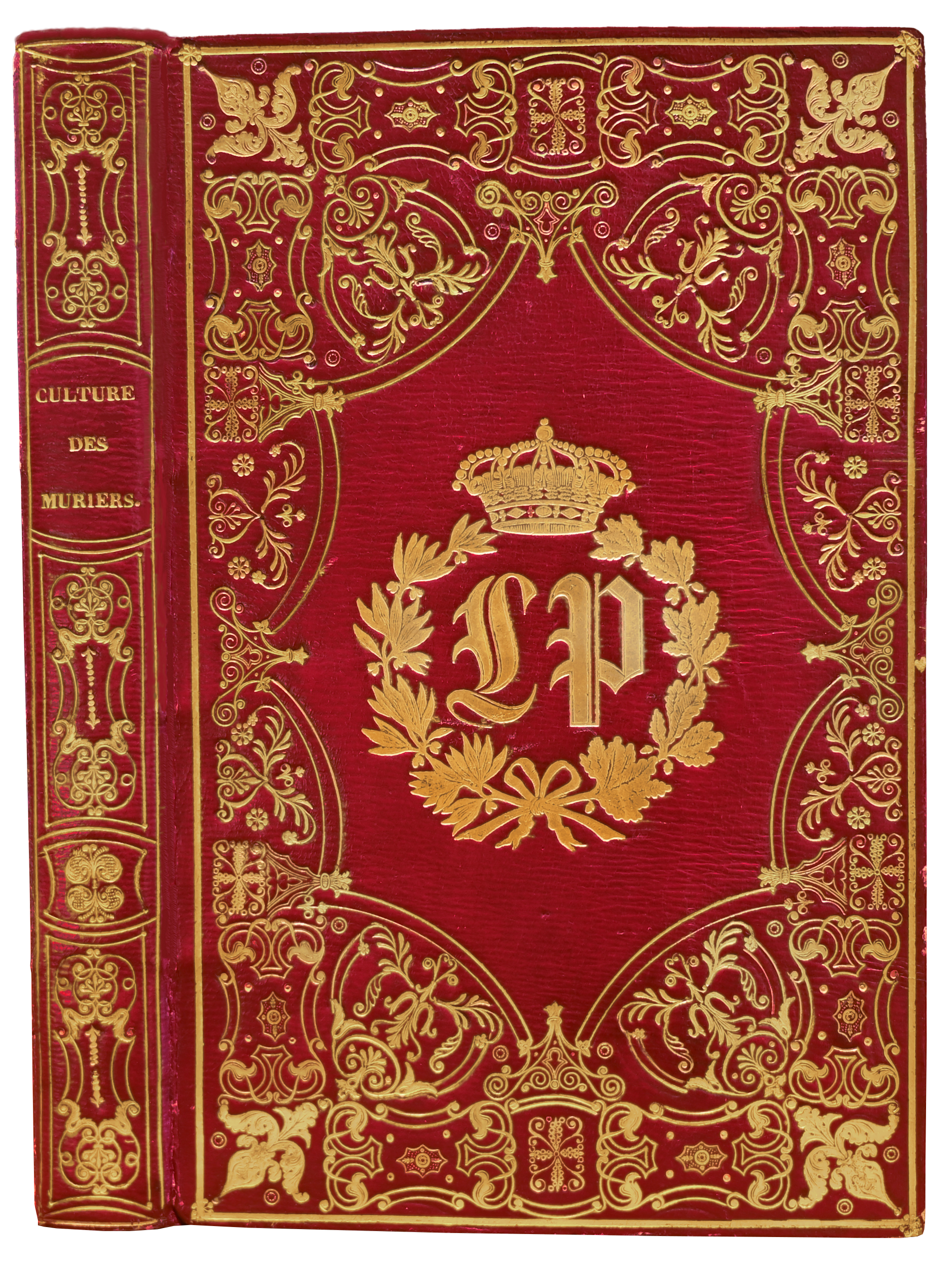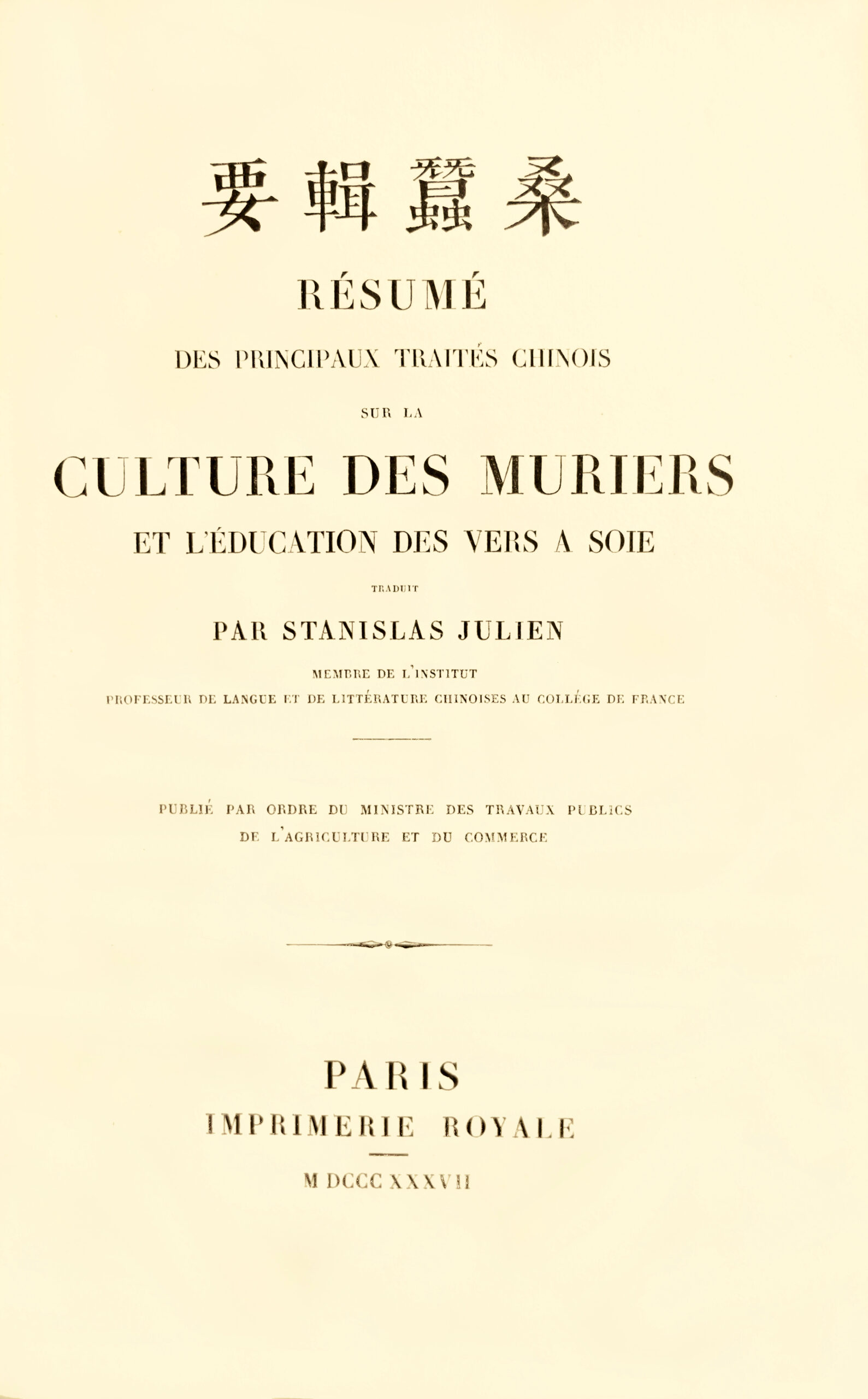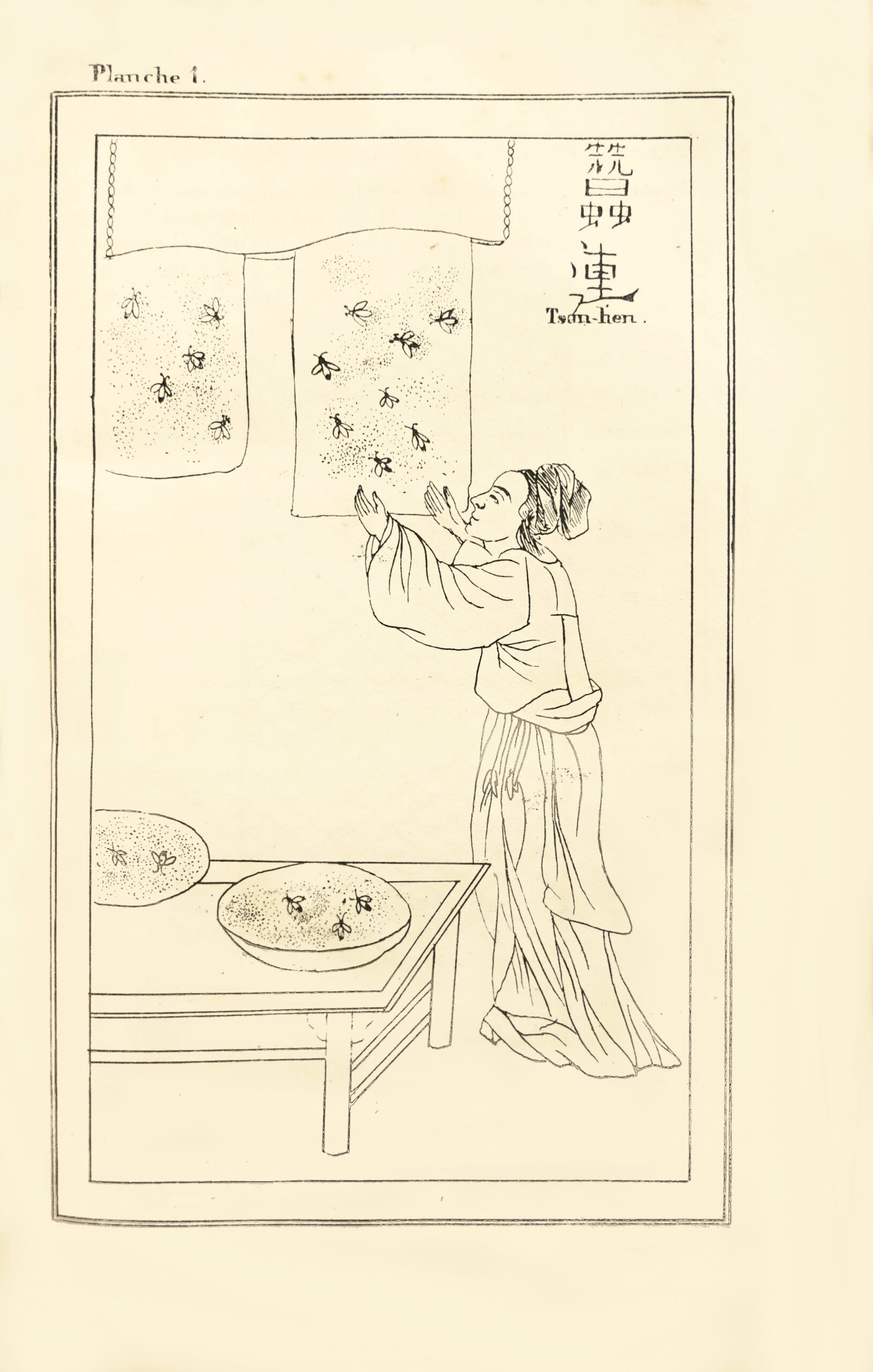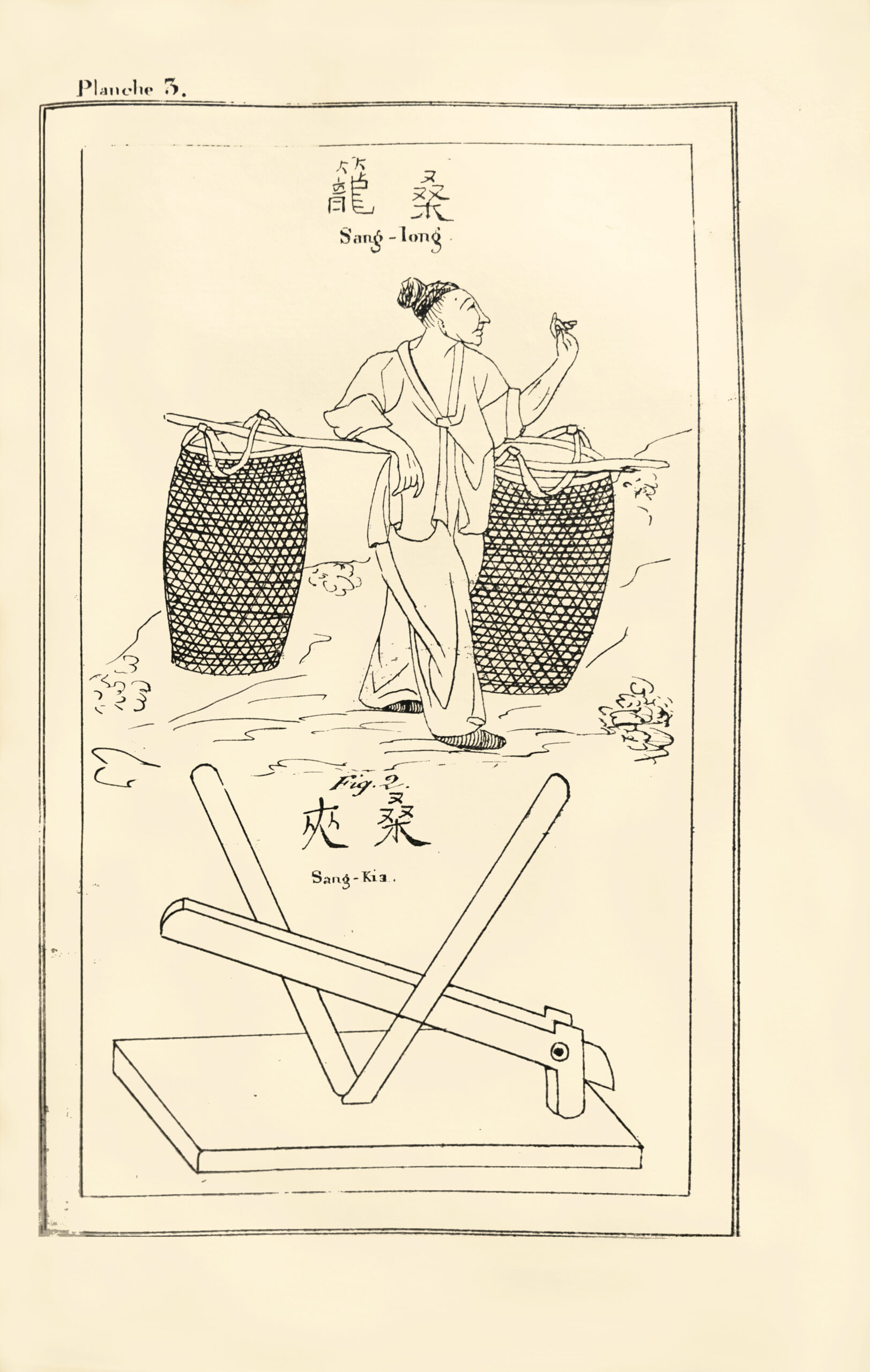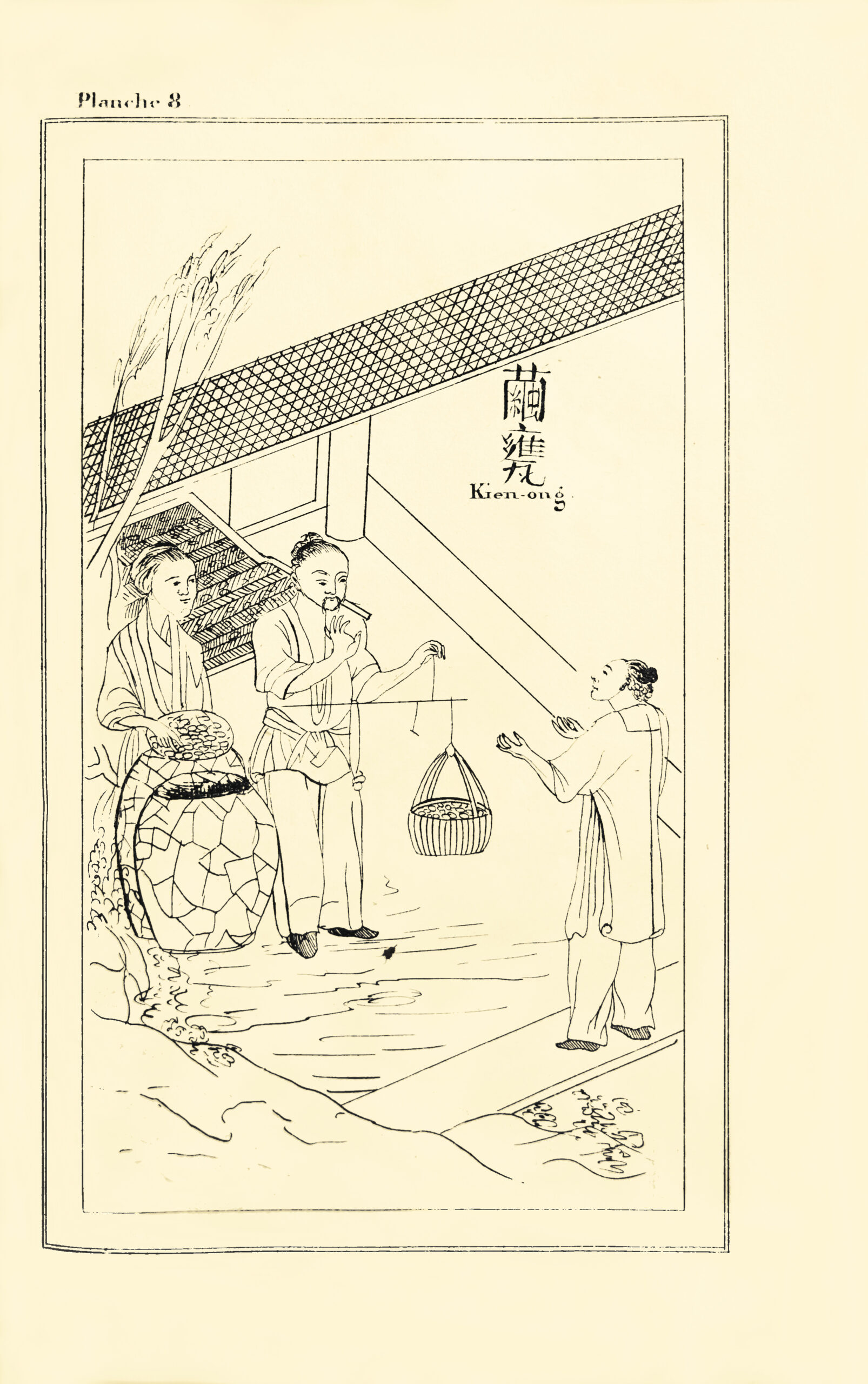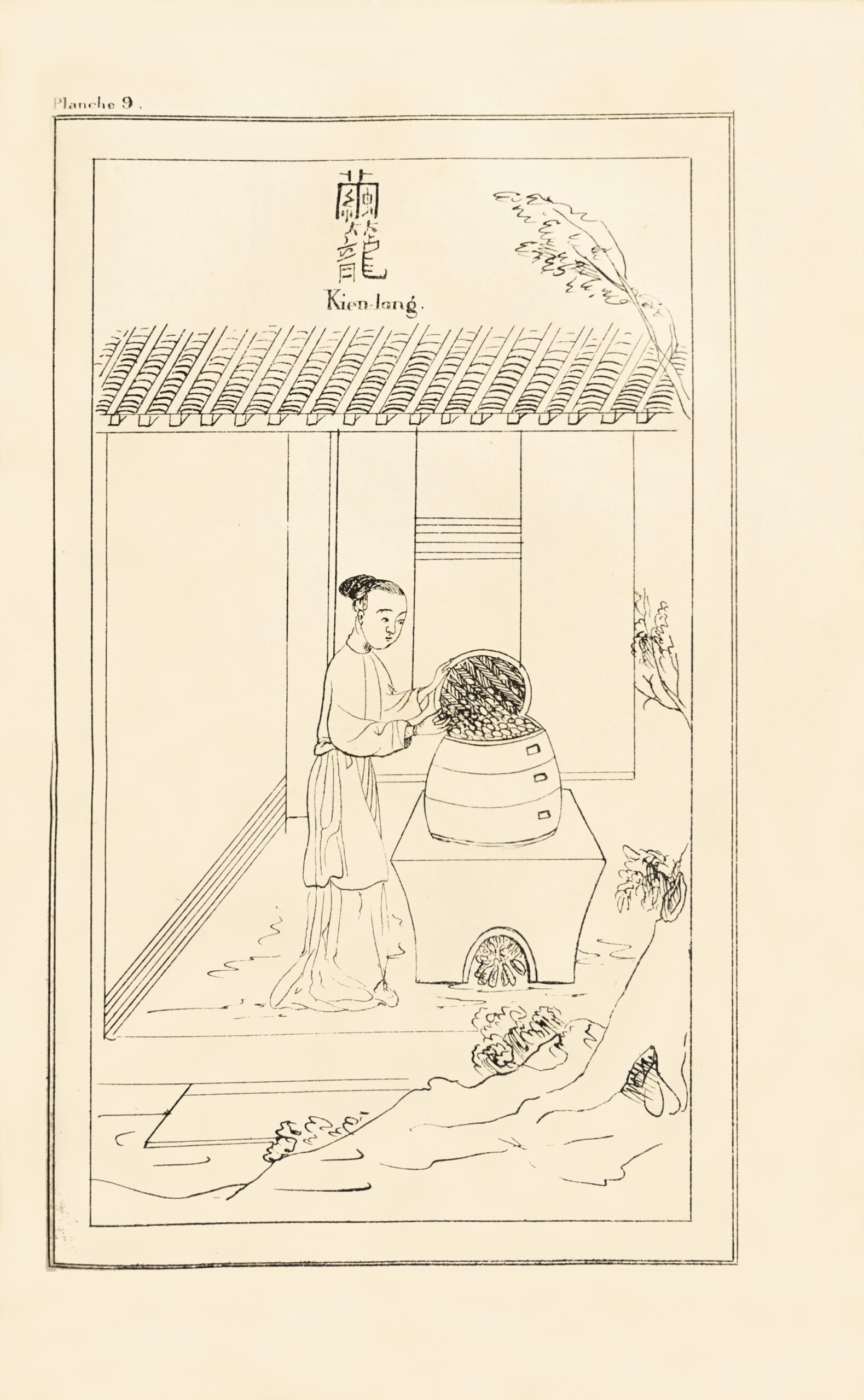Paris, Imprimerie royale, 1837.
8vo with xxii pp., (1) l., 1 plate and 1 table folded, 224 pp., 10 plates out of pagination.
Straight grained red morocco, numerous gilt fillets around the covers, gilt-stamped arms in the center, flat spine decorated with gilt patterns, gilt inner border, doublures and endleaves in blue watered silk, gilt edges. Contemporary binding.
229 x 140 mm.
First edition of this work published on the order of the ministry of agriculture, illustrated with 2 folding plates and 10 figures out of pagination.
Asian journal 1837, serie III, Tome III, p.478 ;
French sinologist, Stanislas Julien (1797-1873) was tenure of the chair of Chinese and Manchu language and literature at the College de France from 1832 to 1873.
« Since ancient times, the superior quality of Chinese silk was the subject of an international trade.
Eager to benefit of the financial advantages linked to this activity, the Sovereigns of several countries tried to perceive the secrets this typical Chinese industry. Many travelers, missionaries and merchants collected Chinese treaties of sericulture and conducted inquiries on the spot.
This research reached its summit with the publication by Stanislas Julien, in 1837, of Résumé des principaux traités chinois sur la culture des mûriers et l’éducation des vers à soie a work translated into various European languages from the moment of its publication.
The editor of the foreword, Camille Beauvais, pointed out that he personally practiced sericulture following two Chinese methods that allowed him to obtain more satisfying results than the French methods.» (Mau Chuan-Hui).
A magnificent presentation copy specially printed on large vellum paper and bound in a red morocco binding for the king Louis-Philippe.
« Louis-Philippe received at his birth the title of Duke of Valois that he would trade for the title Duke of Chartres in 1785 and again for the title of Duke of Orleans in 1793. Imbued with new ideas, he became popular in Paris at the time of the Revolution. He travelled a lot throughout Europe and America. He was offered the kingship that he accepted on August 7th in 1830 by taking the name of Louis-Philippe I. Very smart, he always looked how to rule himself under the name of his ministers. Very cultivated and very artistic, Louis-Philippe owned 2 libraries notable for the quality of the works they contained. » (Olivier Hermal, pl. 2499).
In 1843, king Louis-Philippe ordered to organize a mission to renew commercial relations with China.
It comes from the library of Geronimo marquis of Adda, with ex-libris.
See less information

